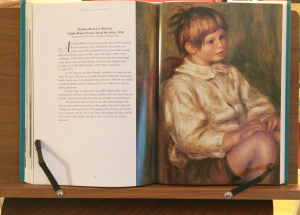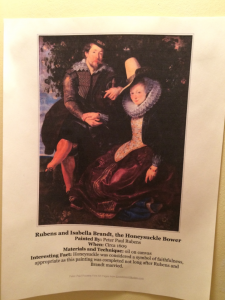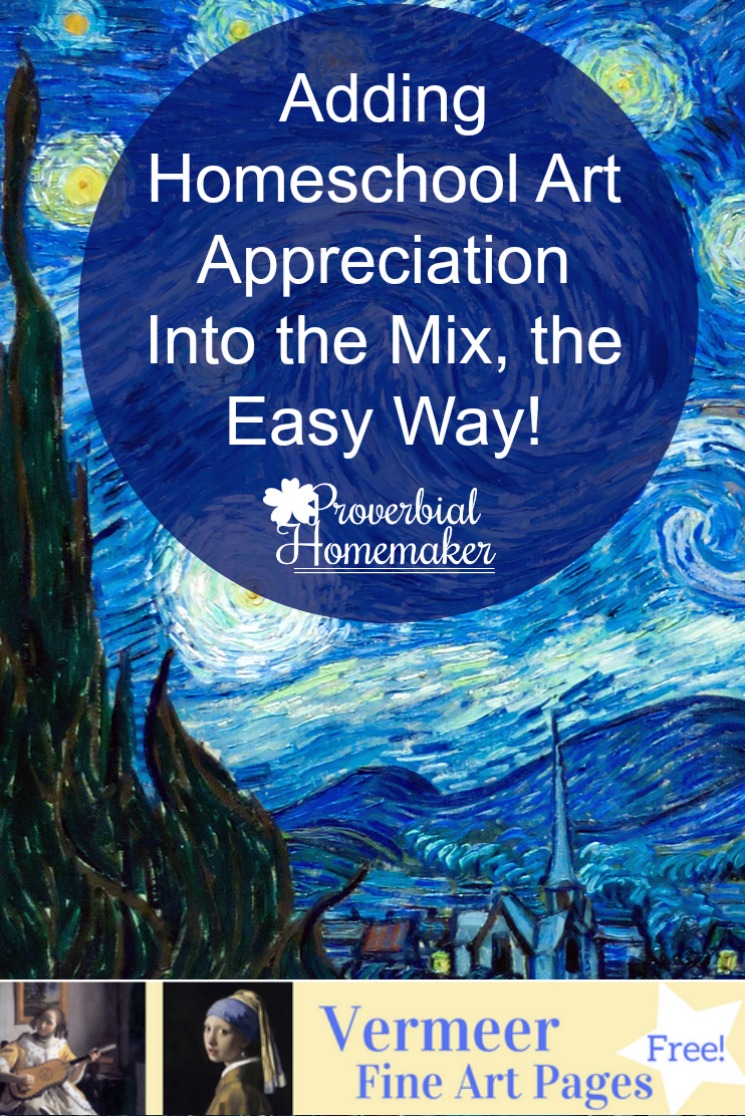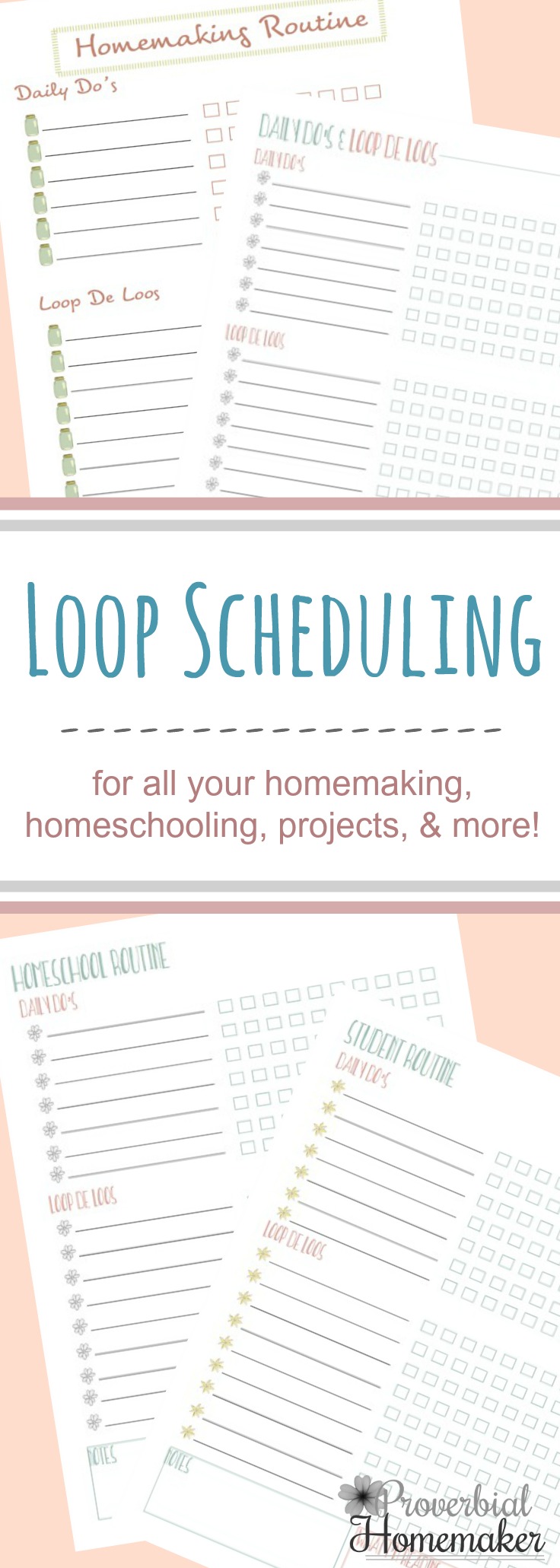I like extras. Don’t you? Frosting on cake. Wrapped presents with a bow. Doors with wreaths. Songs sung in harmony. Flowers in a vase. Fluffy blankets on a bed. We could live without all that, sure, but the extras in life give that burst of joy and delight that make things better.
The funny thing is, when it comes to homeschooling, sometimes between our energy levels, creativity, budget, or perspective, it can be easy to start leaving out the extras and get very nose-to-the-grindstone. We feel like there’s no time to teach about composers. Poetry seems too hard to understand, so we leave it for later. Art seems formal and distant, and kids won’t really care about that anyways, will they?
Disclosure: *This post may include affiliate links. As an affiliate, I earn from qualifying purchases. Read the disclosures and terms for more information.
Well, I’ve got good news for you my friend, because today I’d like to share three great ways you can make the awesome extra of art appreciation easy, natural, and completely do-able in your life! Why? Because whether you realize it or not, the timeless beauty of fine art is a gift to all ages, and you deserve it! Plus, art can be a powerful enhancement to your other studies.
As a busy mother of six that has homeschooled for 20 years, I believe in keeping things simple. If it’s complicated or fussy, it won’t last long at my house, and I’m willing to bet the same is true for you. Fortunately, sharing art with your children can be as easy as 1, 2, 3!

1. Is there art in your home?
When deciding how to decorate our homes, it can be easy to get stuck thinking that everything should match, or relying on mass-produced items to put on the walls and shelves. I’d like to encourage you to start cultivating your own enjoyment of art, and letting that show in your home. Of course you, probably aren’t going to purchase an authentic Monet or Degas piece for your home (me neither!), but I bet you could get a wall calendar in your kitchen featuring art that you love, or put a framed poster of a beloved painting on display. Perhaps you’ll see an interesting sculpture, painting, or bowl at a fall festival and decide to get it and enjoy it’s beauty in your home. Did one of your children draw or paint something really special? Why not frame it and put it up? (Yes! Children’s art work can be elevated beyond the fridge door!)
Don’t get hung up on what “good art” is. You don’t need any hoity-toity rules when it comes to art. If you like it, if it speaks to you, if it makes you think or captures your interest or imagination, it’s good art. The end. So leave space for new art to enter your life. Be ready to invest a few dollars or more every now and then when you see something you really love. Don’t worry about whether anything “matches.” Just see what art speaks to your heart, and let it into your life. Find a space on the wall or shelves to see and enjoy it. This is a great starting point for your kids. When YOU like to look at art, and give art an honored place in your home, you are leading by example and showing your children that you appreciate creative works and find value and beauty in it. Don’t underestimate the value of sharing this perspective with your children! It’s a powerful starting point.

2.Art Books on Display:
When it comes to wanting to introduce your children to specific kinds of art, books are a very easy starting point. While lots of families have at least a couple art books on the shelf, I encourage you to get them out on display. Very few children are inspired by a book spine, but when you bring a book or two out onto the coffee table, or set up a few books forward-facing on a shelf, or open them up on a book easel, you’ll draw in eager observers easily.
I often find coffee table sized art books at yard sales for a few dollars, or at used book stores. Of course, you can always borrow art books from the library, too, and have a rotating collection in your home!
The approach doesn’t have to be fancy, it just has to get their attention. Open up those books and invite the children to look, point, touch, and turn the pages!

3.Fine Art Pages:
With six children born in ten years, you can probably imagine that we had a long stretch in our home where sticky hands, paper-ripping bandits, and sippy cup spills were the norm. In those days I would not have dared put out any special books on display for my children. (certainly not the library books that I would have had to pay to replace!)
My favorite solution to my desire to get art in front of children and make it accessible, without taking any great risks, is Fine Art Pages. Each printable page features a work of art and just a little bit of information about the piece and the artist. The approach is simple: print ’em out, put ’em up, and watch the magic happen! If you choose your spots wisely, you’ll have the very best stealth art appreciation program around, and you won’t have had to actively teach a thing.
No announcement or lesson is needed for Fine Art Pages. All you have to do is set the stage, and your curious children will do the rest.
Think of places around the house where your children will be likely to spend time seeing the art. Those are the spots to add Fine Art Pages. It may be next to where they sleep, by the changing table for the baby (yes! Little ones appreciate art too), or by where they brush their teeth. In fact, the very best spot in the whole house for Fine Art Pages is…..next to the toilet! Yessirree, I kid you not. Every member of your family spends some time there every day, and they will be free to look at the art without any pressure or expectations. Let the art speak for itself. Let your children become friends with the art. Charlotte Mason said, “Every child should leave school with at least a couple hundred pictures by great masters hanging permanently in the halls of his imagination.” Fine Art Pages makes this goal easy and accessible without burdening your schedule, and bringing nothing but joy and beauty into your home!
I’d love to help you get started with using Fine Art Pages in your home, so you can see how easy it is! Right now you can sign up to get our Vermeer Fine Art Pages here!
Vermeer Fine Art Pages
*Your download link will be emailed to you and you will be subscribed to Proverbial Homemaker if you aren’t already. Be sure to check your spam/promotions folder. If you have any issues, check out this troubleshooting guide or feel free to email me!
Awesome! Keep an eye on your inbox for an email with the download link. Hope you love it!
Note: Signing up to download this form will subscribe you to ProverbialHomemaker.com and EnrichmentStudies.com.
I do believe that when it comes to the valuable but non-essential subjects such as the arts, it’s extremely important to make it simply accessible and a delight. Whether you try Fine Art Pages or any of my other ideas, I hope that you start to experience more of the joy and beauty of the arts in your homeschool this year!
Erica Johns is the owner of Enrichment Studies, where she helps homeschool families include more of the joy and beauty of fine arts in their everyday lives. Erica and her husband Dave started homeschooling back in 1997. They now have 3 grown children and 3 teenagers still being homeschooled.










 by Stephanie, The Multi Taskin' Mom
by Stephanie, The Multi Taskin' Mom